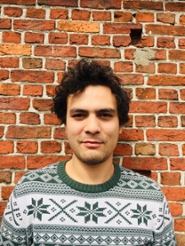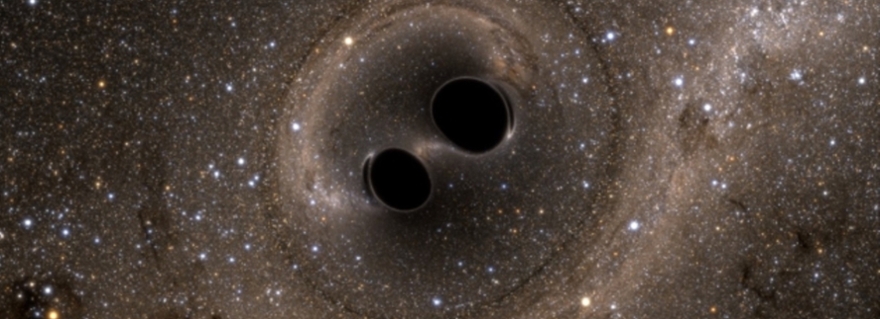ASTRONOMY
Dutch researcher's simulations reveal how black holes become supermassive
Leiden astronomy Master's student Arend Moerman has received an A+ for his thesis research on the simulation of chaotic interactions of three black holes. The simulations, which he carried out together with his Leiden and Oxford colleagues, show that lighter black holes tend to slingshot each other out into space, while heavier ones tend to merge. The research appeared in the academic journal Physical Review D.
Moerman spent a year investigating the dynamic interactions and collisions between three imaginary black holes. The interactions between three bodies such as stars, planets, or black holes cannot be predicted with an elegant formula. Moerman, therefore, used a supercomputer that calculates what happens for a short time and then uses the result as input for the prediction of the next period. 
Extended with the theory of relativity
The computer code is an extended version of the code used by first author Tjarda Boekholt in 2020 and 2018. The new, extended code also included Einstein's theory of relativity. This is important because the theory of relativity plays a major role, especially in the case of heavy objects such as black holes.
The researchers varied the masses of the three interacting black holes. Starting with one solar mass, they increased the mass up to a billion times the mass of the sun.
Tipping point
Around ten million solar masses, there appeared to be a tipping point. In the simulations, black holes that are lighter than about ten million solar masses mostly eject each other through a gravitational slingshot. Black holes that were heavier than this, started to merge. First, two black holes merge. The third follows later. The black holes merge because they lose kinetic energy and that is because they emit gravitational waves.
"Arend's work has led to a new understanding of how black holes become supermassive," says Simon Portegies Zwart. "In the simulations, we see that heavy black holes no longer endlessly move around each other, but that, if they are heavy enough, they collide pretty much instantly." 
Following your interests
Moerman was looking for a graduation subject at the interface of astronomy, mathematics, and computer science. This he found with his supervisor Portegies Zwart. "Programming appealed to me. In the beginning, it was not quite clear what I had to do," said Moerman. "I had to build the theory of relativity into an existing code, but how and what was not yet clear. But that was the fun part: it gave me the freedom to choose and simulate what I found interesting."
From stargazer to star chef
An A+ is wonderful, but Moerman takes most satisfaction from the more tangible result: "A grade is a grade, I am most proud of our research. Nevertheless, the A+ was celebrated extensively with friends. "It was a tough week," he confesses with a laugh.
Moerman has meanwhile started a second graduation research project. That is about DESHIMA, a Dutch-Japanese spectroscope on-chip. After his master's he would like to pursue a Ph.D. I've seen interesting positions passing by and have even sent out an application. But even if that doesn't work out, there are options: "I'm now working as a sous-chef in a restaurant. If science doesn't work out, I'll switch to being a chef."


 How to resolve AdBlock issue?
How to resolve AdBlock issue?